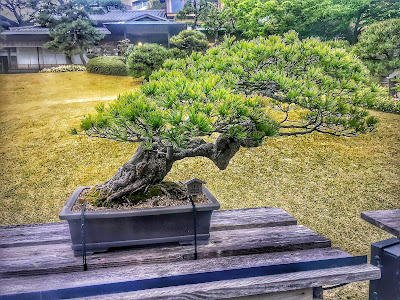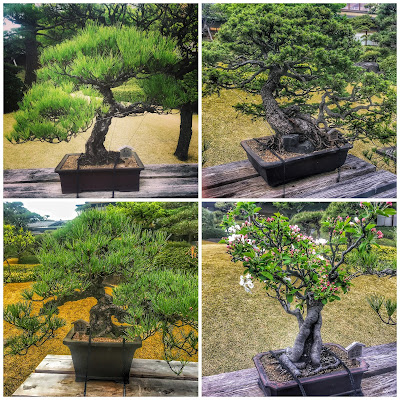Bonsai Aesthetic
Bonsai Aesthetic
Location:
Happo-en
八芳園1 Chome-1-1 Shirokanedai, Minato City, Tokyo 108-0071
https://www.happo-en.com/
Many cultures in Japan have come directly from China, and so did the bonsai; translated to mean " tray planting." Refinement in bonsai cultivation is subjective. Chinese bonsai trees mimic the grandiose real-life scenery in life whereas Japanese bonsai mimics the shape of real-life trees. Personally, I love both aesthetics.
Why do people buy and cultivate them?
Contemplative reasons presumably. They are beautiful just to gaze at especially against a backdrop or a mural. A centerpiece for discussion and artistic expression of the grower. There are thousands of books written on bonsai that go into detail on the various styles and history. The purpose of this post is to give you a super brief outline of them.
Japanese adherence to attention-to-detail is engrained culturally here, and this is what makes bonsai so appealing.
All of these trees are hundreds of years old, and to imagine if they could speak, what would they say or ask? Are youuuuu.....( shakey voice) the soul of Japan?
 |
| Goyo Matsu 215 years old. |
 |
| Nishiki Matsu 90 years old |
 |
| Ezo Matsu 315 years old |
 |
| Ezo Matsu 325 years old |
 |
| Shinpaku 215 years old |
 |
| Hime Ringo 85 years old |
 |
| Hime Gaki 105 years old. |
 |
| Shinpaku 190 years old |
 |
| kuro matsu 198 years old |




Comments
Post a Comment